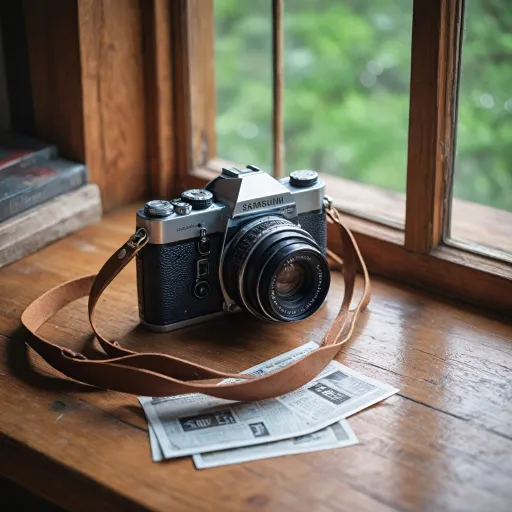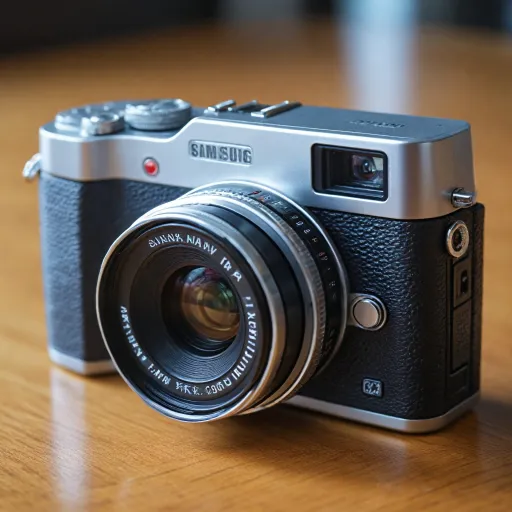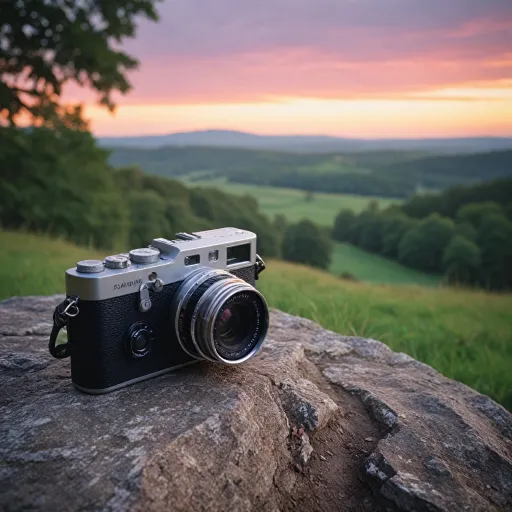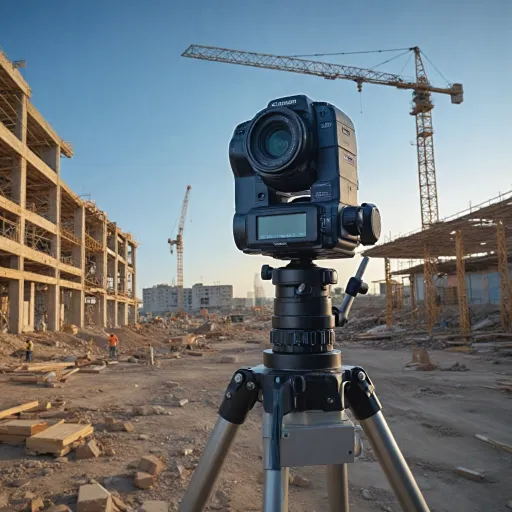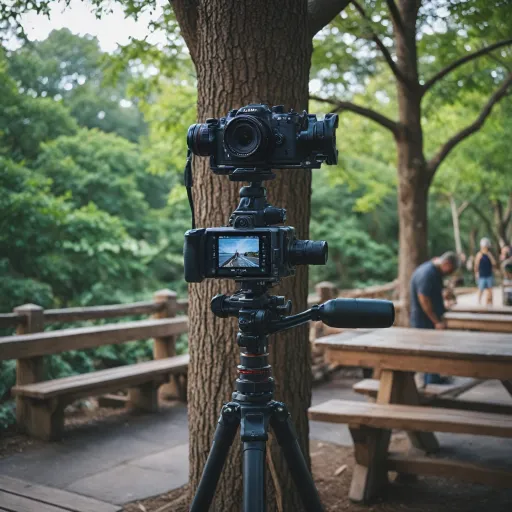
Understanding the olympusflex 2 8
What Sets the Olympusflex 2.8 Apart in the World of TLR Cameras
The Olympusflex 2.8 is a standout model in the history of Japanese twin lens reflex (TLR) cameras. Introduced in the early 1950s, this medium format camera was Olympus’s answer to the growing demand for high-quality, user-friendly cameras. The Olympusflex series, sometimes referred to as the flex camera line, was designed to compete with other well-known TLRs of the era, offering both reliability and innovative features.
At its core, the Olympusflex 2.8 is a medium format camera that uses 120 film, producing images with impressive detail and tonal range. The camera’s twin lens system—one lens for viewing and focusing, the other for taking the photograph—makes it easier to compose shots and achieve sharp focus. This design is especially appealing to both beginners and enthusiasts who appreciate the tactile experience of manual focusing and the visual clarity provided by the viewing lenses.
- Lens and Shutter: The Olympusflex 2.8 is equipped with a Zuiko lens, known for its sharpness and pleasing image rendering. The Seikosha Rapid shutter offers a range of shutter speeds and a reliable shutter release mechanism, contributing to the camera’s reputation for consistent performance.
- Build and Ergonomics: The model features a robust build, with a focus on durability and ease of use. Its design reflects the craftsmanship typical of Japanese photography equipment from the era.
- Film Advance and Format: As a medium format camera, the Olympusflex 2.8 provides larger negatives compared to 35mm cameras, resulting in higher image quality. The film advance mechanism is straightforward, reducing the risk of film transport issues.
Collectors and photographers alike value the Olympusflex 2.8 for its unique blend of classic design and practical features. Its place in the broader landscape of Japanese photography is significant, as it represents a period when Olympus was establishing its reputation for quality and innovation. For those interested in exploring more about medium format film cameras and how the Olympusflex 2.8 compares to other models, you can find a comprehensive guide to top medium format film cameras on our blog.
In the following sections, we’ll take a closer look at the design and build quality, lens and image performance, and what makes the Olympusflex 2.8 a favorite among both collectors and active film photographers.
Design and build quality
Classic Twin Lens Reflex Construction
The Olympusflex 2.8 stands out among medium format cameras for its robust twin lens reflex (TLR) design. This model, often simply called Olympus flex, features two Zuiko lenses: one for viewing and focusing, and the other for image capture. The viewing lens sits above the taking lens, allowing photographers to compose shots through a waist-level finder. This arrangement, typical of Japanese TLR cameras from the era, offers a unique shooting experience compared to single lens reflex or rangefinder models.
Materials and Build Quality
Built with a sturdy metal body and textured leatherette covering, the Olympusflex 2.8 feels solid in hand. The camera’s weight and balance help steady shots, especially when using slower shutter speeds. The seikosha rapid shutter mechanism is known for its reliability, and the shutter release is positioned for comfortable operation. The film advance lever and focusing knobs are made of durable materials, designed to withstand years of use. Many enthusiasts appreciate the tactile feedback from the controls, which adds to the overall experience of shooting with this medium format camera.
Attention to Detail and Usability
Olympus paid careful attention to the details that matter to photographers. The bayonet filter attachments allow for quick changes of filters, while the aperture and shutter speed dials are clearly marked and easy to adjust. The camera’s back opens smoothly for film loading, and the advance mechanism ensures proper frame spacing. The focusing screen is bright, making it easier to achieve sharp images even in lower light. These design choices make the Olympus flex camera approachable for both beginners and experienced users.
Comparing with Other Models
Compared to other Japanese medium format TLRs, the Olympusflex 2.8 holds its own in terms of build quality and user-friendly features. Its compact size for a medium format camera makes it more portable than some competitors. If you’re interested in exploring more about classic film cameras and how they compare, check out this guide to finding the perfect 35mm film camera for your needs.
Legacy in Japanese Photography
The Olympusflex 2.8 has been featured in photography magazines and price guides, such as Asahi Camera, as a notable example of Japanese camera engineering. Its design reflects the era’s focus on reliability, precision, and user rights to repair and maintain their equipment. For collectors and photographers alike, the build quality of this model is a key reason it remains sought after in the vintage camera market.
Lens and image performance
Zuiko Lenses and Twin Lens Reflex Performance
The Olympusflex 2.8 stands out among medium format cameras for its use of Zuiko lenses, a hallmark of Japanese optical engineering. This twin lens reflex (TLR) model features a paired lens system: one for viewing and focusing, the other for capturing the image on film. The viewing lenses provide a bright, clear image, making it easier to compose shots even in lower light. The taking lens, with its 75mm focal length and f/2.8 maximum aperture, delivers sharpness and pleasing depth of field, characteristics often praised in photography magazines and rights discussions about classic cameras.
Shutter Mechanism and Exposure Control
The Olympusflex 2.8 is equipped with a Seikosha Rapid shutter, offering a range of shutter speeds from 1 second to 1/500 second, plus Bulb mode for long exposures. This flexibility allows photographers to adapt to various lighting conditions and creative needs. The shutter release is smooth and responsive, minimizing vibration and helping to maintain image sharpness. The speed aperture control is conveniently placed, making it easy to adjust settings while keeping your eye on the scene. This is a key advantage for both beginners and enthusiasts exploring medium format photography.
Film Advance and Focusing Precision
Film advance on the Olympus flex camera is manual, with a reliable mechanism that ensures proper frame spacing and reduces the risk of overlapping exposures—an issue sometimes found in other vintage models. The focusing screen is bright and well-marked, aiding in precise manual focusing. The TLR design, with its waist-level finder, encourages a slower, more deliberate approach to composition, which many photographers find rewarding. The camera supports 120 film, producing 6x6cm negatives that offer excellent detail and tonal range.
Filter Attachments and System Flexibility
The Olympusflex 2.8 features a bayonet filter mount, allowing for quick attachment of filters and lens accessories. This is especially useful for those interested in experimenting with contrast or color effects in their images. The system's flexibility has contributed to its enduring appeal among collectors and users alike, as noted in various price guides and Japanese photography publications like Asahi Camera.
For enthusiasts comparing classic medium format models, the Olympusflex 2.8's lens and image performance often draw parallels with other respected TLRs. If you're interested in how it stacks up against another beloved film camera, check out this in-depth look at the Minolta X-7A for further insights into vintage camera performance.
Ease of use for beginners and enthusiasts
Getting Started with the Olympusflex 2.8
The Olympusflex 2.8, a classic Japanese twin lens reflex (TLR) camera, is known for its approachable design. For those new to medium format cameras, the flex camera’s layout is surprisingly intuitive. The top-down viewing system, with its bright viewing lenses, allows users to compose shots easily, even in lower light. The focusing mechanism is smooth, and the large focusing knob offers precise control, which is especially helpful for beginners learning to achieve sharp images.
Controls and Operation
Operating the Olympusflex is straightforward. The camera features a Seikosha Rapid shutter, which is reliable and offers a range of shutter speeds suitable for most photography styles. Adjusting the speed and aperture is done via clearly marked dials, making it easy to experiment with exposure settings. The shutter release is responsive, and the film advance lever has a satisfying, positive action, reducing the risk of accidental double exposures—a common issue with some older models.
- Shutter Speed: Marked in clear increments, allowing for quick adjustments.
- Aperture Control: The Zuiko lens provides smooth aperture changes, supporting creative depth-of-field effects.
- Film Loading: Medium format film is loaded from the back, and the process is well-documented in vintage photography magazines and asahi camera guides.
Flexibility for Different Skill Levels
Whether you are just starting out or have experience with other medium format models, the Olympus flex offers a gentle learning curve. The bayonet filter attachments make it easy to experiment with different filters, and the camera’s robust build means it can handle regular use. Enthusiasts will appreciate the tactile feedback from the lens and shutter controls, while beginners benefit from the clear layout and logical operation.
Common Challenges and Tips
One issue some users encounter is parallax error, common in TLR cameras. Practicing with the viewing lenses helps minimize this. Also, keeping the lens and shutter mechanisms clean is important for reliable performance. Referencing a price guide or consulting Japanese photography forums can help with sourcing compatible accessories and understanding the value of different Olympus flex models.
Maintenance and reliability
Keeping Your Olympusflex in Top Condition
Maintaining a classic flex camera like the Olympusflex 2.8 is essential for anyone who wants to enjoy reliable performance and preserve the value of this Japanese twin lens reflex (TLR) model. The medium format camera’s mechanical design, including its Zuiko lens and Seikosha Rapid shutter, requires regular attention to ensure smooth operation and consistent image quality.
- Cleaning: Dust and debris can accumulate on the viewing lenses and the main lens. Use a soft brush or blower to gently remove particles. Avoid touching the glass with your fingers, as oils can affect image clarity.
- Shutter and Aperture Care: The shutter speed and aperture mechanisms in the Olympus flex are mechanical and can become sluggish if not exercised regularly. Fire the shutter and adjust the speed aperture settings periodically to keep them moving freely.
- Film Advance and Loading: The film advance system should operate smoothly. If you notice resistance or an issue with winding, it may be time for a professional check. Always load film in a clean, dust-free environment to avoid scratches on the medium format film.
- Focusing and Viewing: The focusing screen and reflex mirror can gather dust or develop haze over time. Cleaning these parts should be done carefully, preferably by a technician familiar with vintage cameras.
- Filter Attachments: The bayonet filter mount on the Olympus flex allows for various filter attachments. Ensure these are clean and fit securely to avoid damaging the lens threads.
Reliability and Common Issues
Olympusflex models are known for their robust build, but like all vintage cameras, they can develop issues with age. Common problems include sticky shutters, slow shutter release, and fogged lenses. Regular use and proper storage—away from humidity and direct sunlight—help prevent these problems. If you encounter persistent issues, seek out a repair specialist with experience in Japanese medium format cameras.
Consulting photography magazines or resources like Asahi Camera can provide additional maintenance tips and price guides for parts. Keeping your Olympus flex in good condition not only ensures better image results but also maintains its collectibility and value among enthusiasts of classic lens reflex cameras.
Collectibility and value
Why Collectors Value the Olympusflex 2.8
The Olympusflex 2.8 stands out among medium format cameras for several reasons. Its twin lens reflex (TLR) design, paired with the Zuiko lens, delivers a unique shooting experience that appeals to both collectors and photographers. The camera’s Japanese heritage and the reputation of Olympus in the world of film photography add to its desirability. Many enthusiasts appreciate the robust build, the precision of the Seikosha Rapid shutter, and the smooth focusing mechanism. These features make the Olympusflex 2.8 a sought-after model in the vintage camera market.
Market Value and Price Trends
When considering the collectibility of the Olympusflex 2.8, price guides and recent sales in photography magazines can provide useful benchmarks. The value of this model can vary depending on condition, originality, and whether it includes accessories like bayonet filter attachments or the original lens cap. Cameras with fully functioning shutter release, accurate shutter speed, and clean viewing lenses tend to command higher prices. Some rare variants or well-preserved examples may fetch a premium among collectors of Japanese photography equipment.
- Condition: Cameras with minimal cosmetic wear and no mechanical issues are more valuable.
- Completeness: Original packaging, manuals, and filter attachments can increase value.
- Functionality: Working film advance, aperture, and focusing mechanisms are essential for higher prices.
What to Watch Out For
Potential buyers should be aware of common issues such as sluggish shutter speed, haze or fungus in the lens, and problems with the film advance. These can affect both usability and value. It’s also important to verify the authenticity of the model, as some cameras may have replacement parts that impact collectibility. Consulting resources like Asahi Camera or other established Japanese photography publications can help confirm details about specific models and production years.
Long-Term Appeal
The Olympusflex 2.8 continues to attract interest due to its classic design and reliable performance. Its place in the evolution of medium format TLR cameras ensures ongoing demand among collectors and users alike. Whether you’re seeking a flex camera for display or for shooting, the Olympusflex 2.8 offers a blend of historical significance and practical value that few other models can match.



